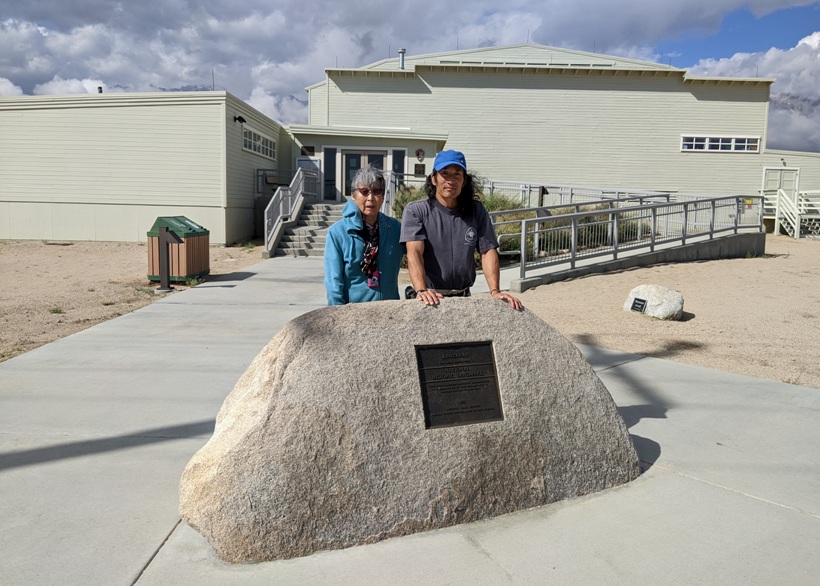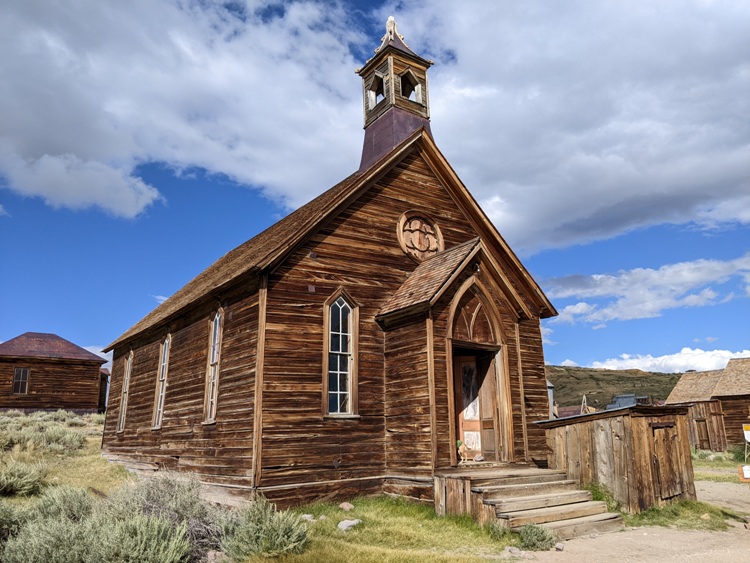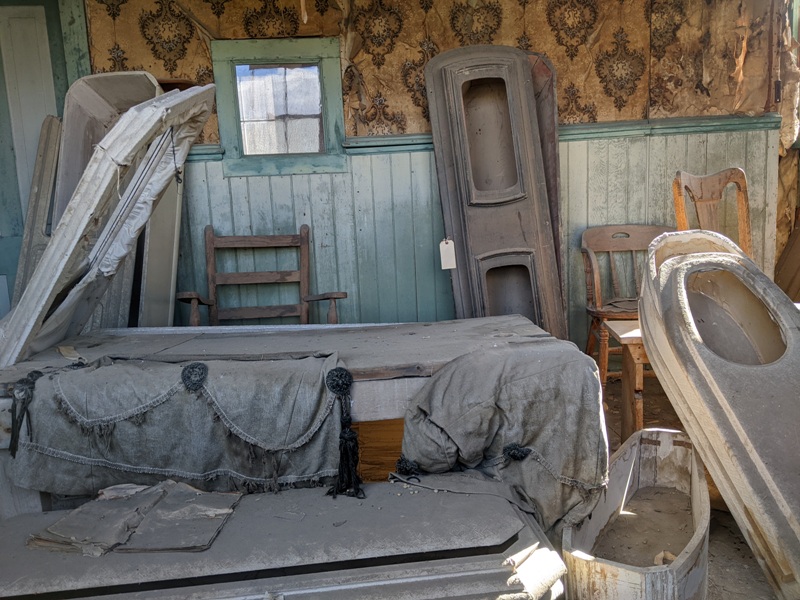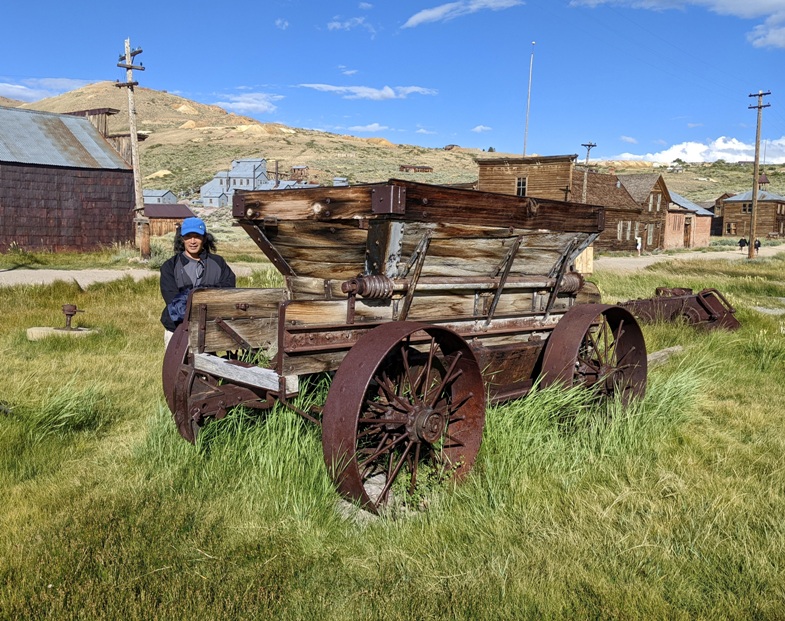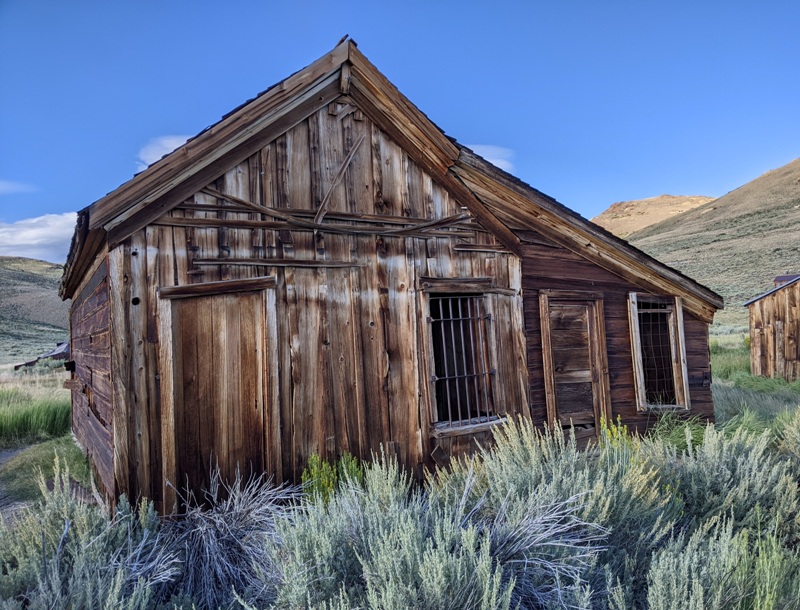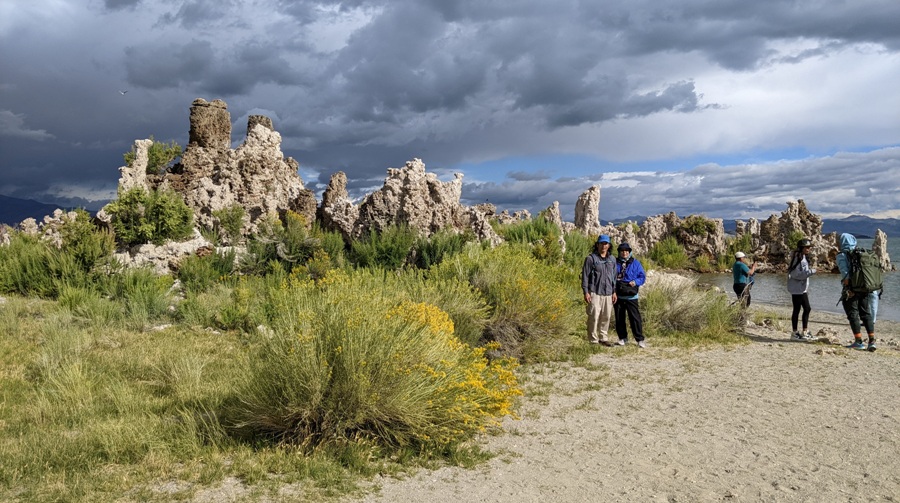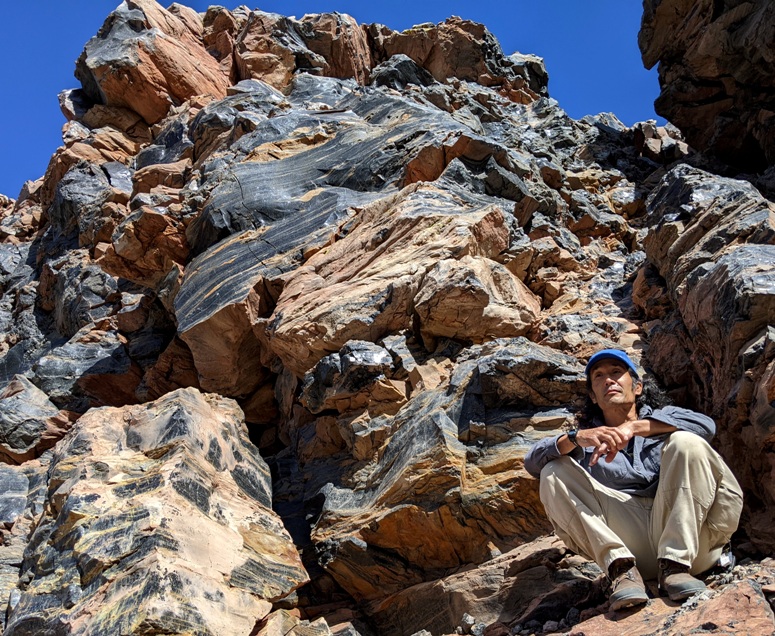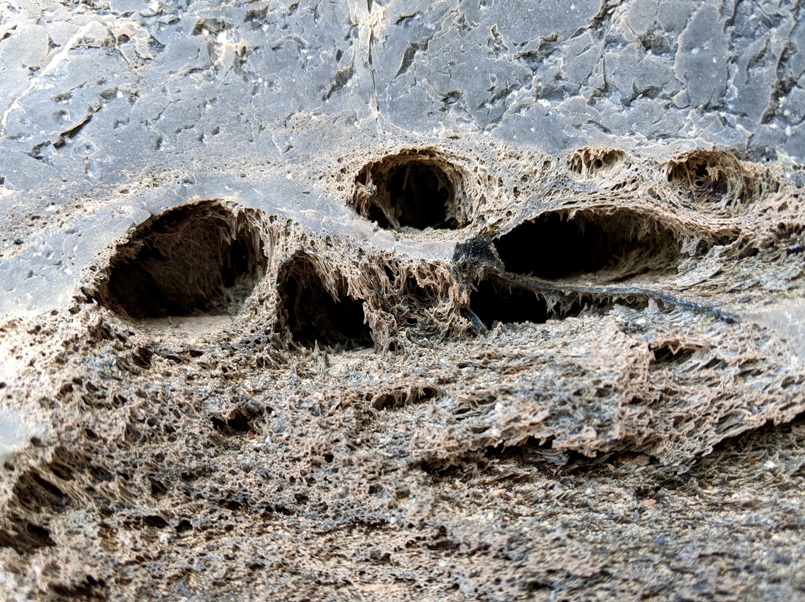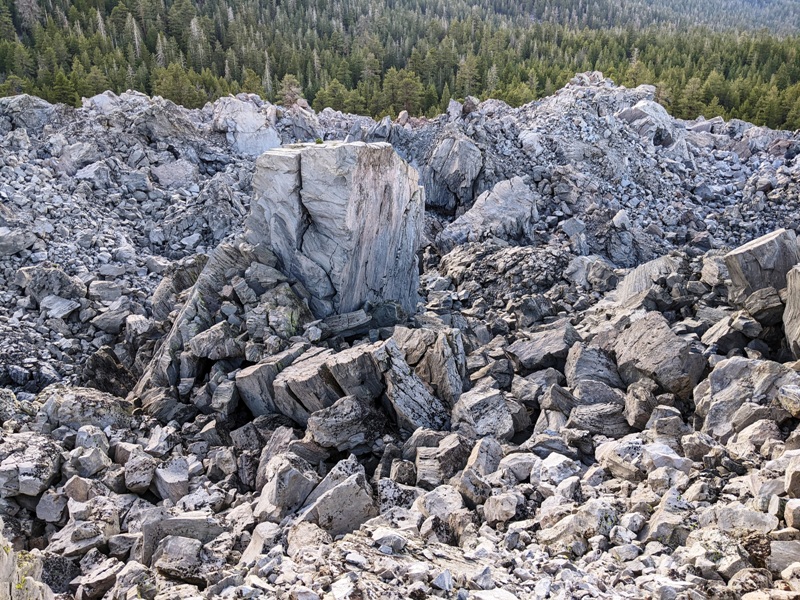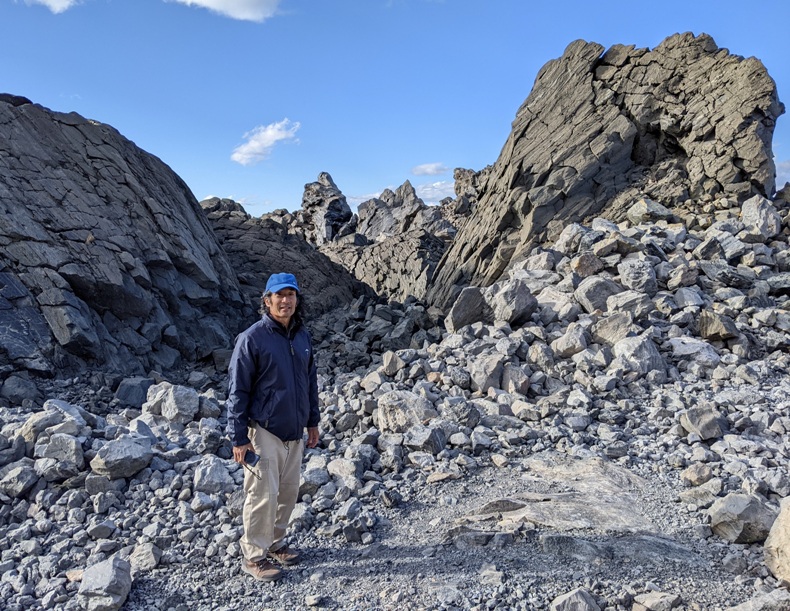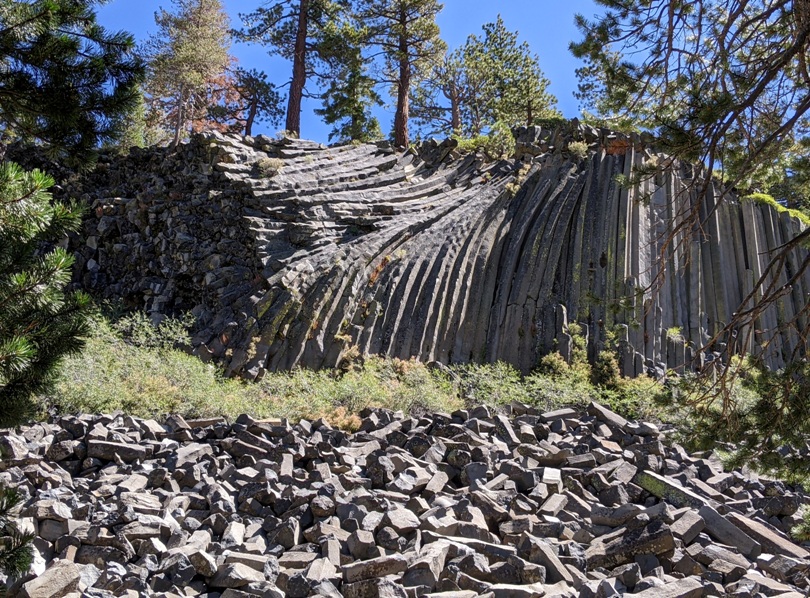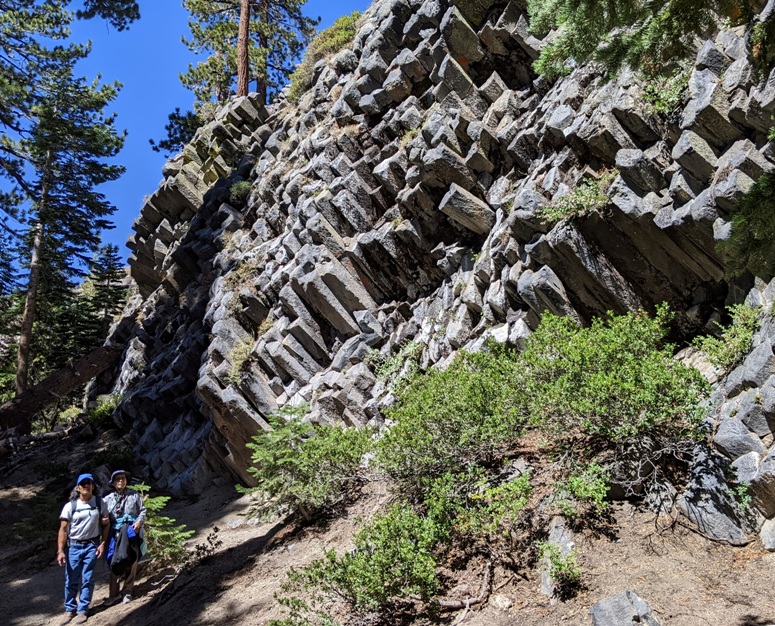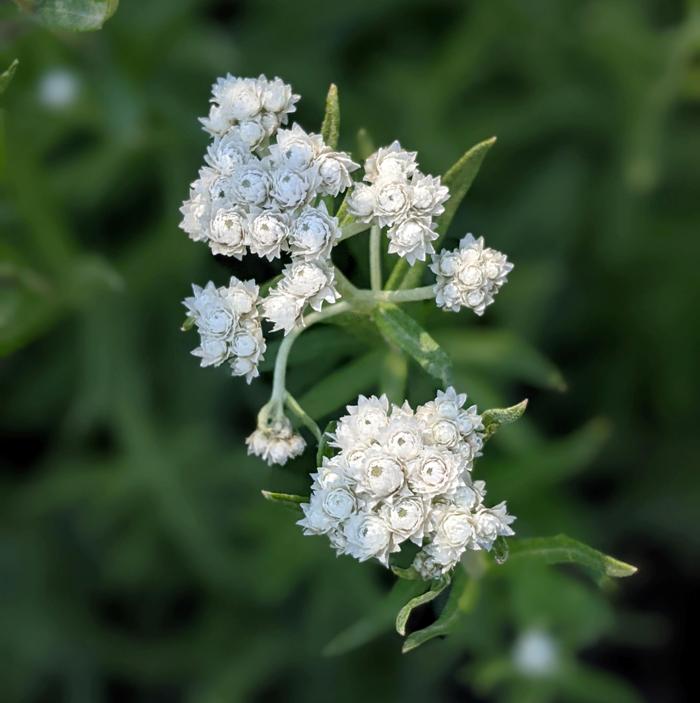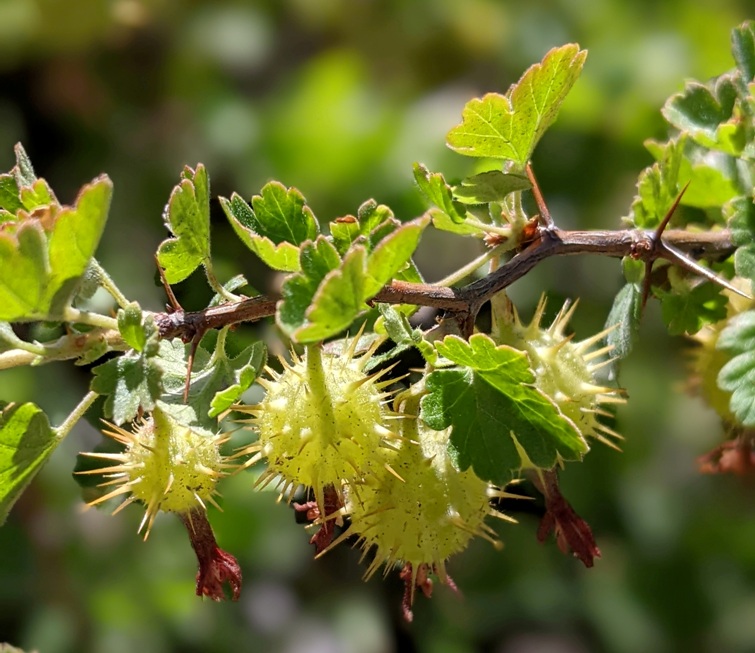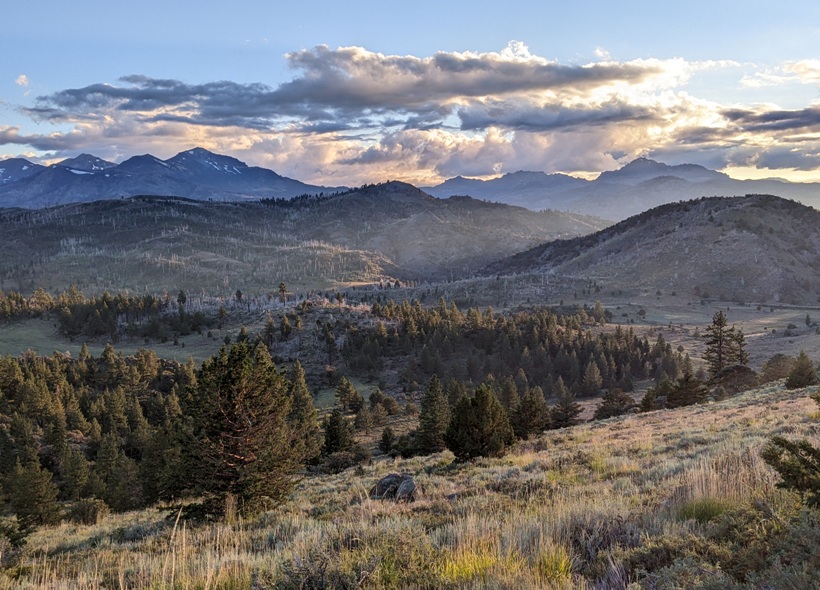It was about a four hour drive to our destination, the
Mono Lake Visitor Center. In the parking lot, I saw a car with a cool SUP sticker.
We arrived shortly before they closed and with just enough time to learn about the area.
Mono Lake is fed by five streams flowing down from the Sierra Nevada.
These pure streams drew the attention of the city of Los Angeles in the 1920s. The city's Department of Water and Power (LADWP) was looking for additional sources for its water supply. Through a lengthy court battle, they condemned the water rights of Mono Basin farmers. Eventually, they bought most of the watered land surrounding Mono Lake.
In 1941, the aqueduct into the Mono Basin was completed, diverting part of the water from Rush, Lee Vining, Parker, and Walker creeks. With the flow of incoming fresh water reduced, Mono Lake began to shrink since water lost to evaporation now exceeded inflow.
In 1970, the city doubled the capacity of their aqueduct system and began taking the entire flow of the Mono Basin creeks. The lake level dropped dramatically, falling as much as forty-five vertical feet. The decline caused Mono's water to double in salinity, threatening its simple, fragile ecosystem. The diverted creeks became dry washes.
- from sign at visitor center titled "When the Creeks Stopped"
Among the concerned biologists was David Gaines. In 1978, he and friends formed the Mono Lake Committee. The Committee's goal was to find alternatives to excessive diversions in order to stabilize the lake level. When LADWP refused to negotiate a solution, the Mono Lake Committee, National Audubon Society, California Trout, and others went to court.
In an effort to win protection for Mono Lake, the Mono Lake Committee lobbied successfully for the creation of the Mono Lake Tufa State Reserve in 1981, and the Mono Basin National Forest Scenic Area in 1984.
The pivotal case is based on a doctrine called the "public trust." It requires the state to protect bodies of water for the use and benefit of the people. In 1983, the California Supreme Court ruled that the public trust doctrine required the protection of places like Mono Lake, even if this meant reconsidering past water allocations. The court said a "better balance" should be struck between the water needs of Mono Lake and Los Angeles.
On September 28, 1994, the State Water Resources Control Board released its decision regarding Mono Lake. The order will raise the lake by 17 feet to an elevation of 6392 over the next 20-30 years.
- from sign at visitor center titled "Take It to the Judge"
The three of us walked on the gravelly
Mono Lake Trail and the
David Gaines Boardwalk from the visitor center to the lake. It was a downhill path that gave us a nice view of the lake to our front.
With much higher ground all around, it is no surprise there is a lake here.
Five streams, fed by the Sierra snowpack, provide most of the freshwater flowing into Mono Lake.
Water also enters the lake from underground sources as seeps and springs.
Rain and snow falling directly into the lake average about seven inches of water each year.
- from sign at visitor center titled "How Water Enters Mono Lake"
Always on the look-out for wildlife, I saw some type of Fence Lizard, perhaps a Great Basin Fence Lizard.
The Great Basin Fence Lizard can often be seen basking in the sun on rocks, fences, and buildings. While sunning themselves, fence lizards may change their color dramatically ranging from a light gray to a dark black. This is a way for them to control their body temperatures in the heat.
- from sign at visitor center titled "Reptiles and Rodents of the Mono Basin"
As the three of us walked towards the lake, I thought about previous groups of people who called this their home.
The Mono Basin has been occupied off and on for the last 9,000-10,000 years. Evidence indicates that volcanic activity has influenced population movements in and out of the region. The Kuzedika, a part of the Paite nation, are known to have been living in the Mono Basin since about 1300 A.D.
Kuzedika women collected kutsavi, or alkali fly pupae, in winnowing baskets and laid the pupae in the sun to partially dry. Kutsavi were an important food source and trade item for the Kuzedika.
Kutsavi are about the size and color of a brown rice grain and taste like bacon bits.
- from signs at visitor center
An important source of food for shorebirds, the alkali fly is a fascinating creature.
- from sign at visitor center
The sun was getting low, casting shadows on the hills and making the vegetation glow.
Looking out on the lake, I could see white rocky formations also reflecting the bright sun.
These structures are known as
tufas and they are what make Mono Lake famous.
Mono Lake's "petrified springs" are spectacular examples of what nature can do with a few basic ingredients. Ask geologists what "tufa" is and they will tell you "it's calcium carbonate formed by the mixing of waters of different compositions."
Tufa gets is name from the Latin "tofus" which means porous stone.
Freshwater springs (calcium) + alkaline water (carbonates) = tufa (calcium carbonate)
Calcium-bearing freshwater springs well up through the carbonate-rich lake water causing a chemical reaction that forms solid limestone, or tufa. Over many years, a tower forms around a spring. Tufa continues to form today where freshwater and lake water meet.
- from signs at visitor center
The first major tufa we saw up close was
Icebox Tufa.
This tufa formed thousands of years ago under a much larger lake as the ice ages were waning. Shepherds of the Mono Basin took advantage of the natural cave-like formation using the tufa for shelter and rest.
- from sign on trail titled "Ranching the Mono Basin"
Alkalinity isn't the only thing that makes the water in Mono Lake special.
An estimated 280 million tons of solids are dissolved within the lake, and it is 2-3 times saltier than the ocean depending on its water level fluctuation over the years.
- from
Mono Lake Committee - Water Chemistry
The water in Mono Lake is inhospitable to most wildlife. But that doesn't mean it is devoid of life.
When Mark Twain dubbed Mono Lake the "Dead Sea of California," he could not have been farther from the truth.
Actually Mono Lake is one of the most productive lakes in the world. It doesn't have a great variety of species, but those that live here do so in phenomenal numbers.
During the summer months, one cubic foot of near-shore, rocky bottomed lake water contains:
Brine shrimp 50-400
Alkali flies (larva, pupae and adults) 5,000-10,000
Microscopic plants and animals - These are too numerous and variable to count
- from sign at visitor center
There is also a lot of life surrounding the lake.
The most abundant shrub at South Tufa, rabbitbrush, quickly moved in as the lake moved out. In the fall, its profuse yellow blossoms color the Basin.
- from sign at South Tufa trailhead
Looking across the lake, we could see two islands.
Paoha, the larger of the two islands, does not look volcanic because its surface is composed of lake bottom sediments. About 300 years ago, a magma rose underneath the lake and pushed these sediments above the water level. Negit, the black island, was formed by volcanic eruptions that occurred between 300 and 1,700 years ago. Negit once hosted most of the state's nesting California gulls. When the land bridge emerged in 1977, most gulls moved to nearby islets to escape predators that could reach their nests.
- from sign outside of visitor center titled "Volcanic Islands"
1 / 2

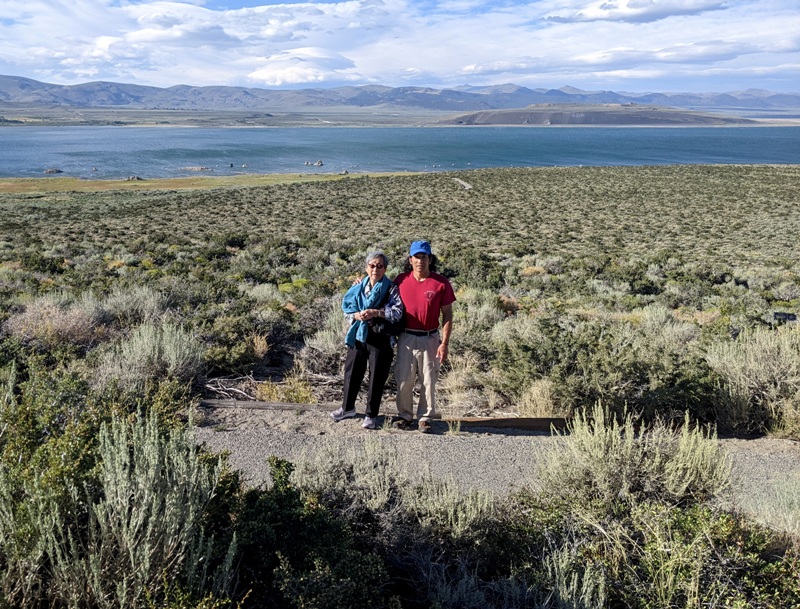
Paoha behind on right.
2 / 2

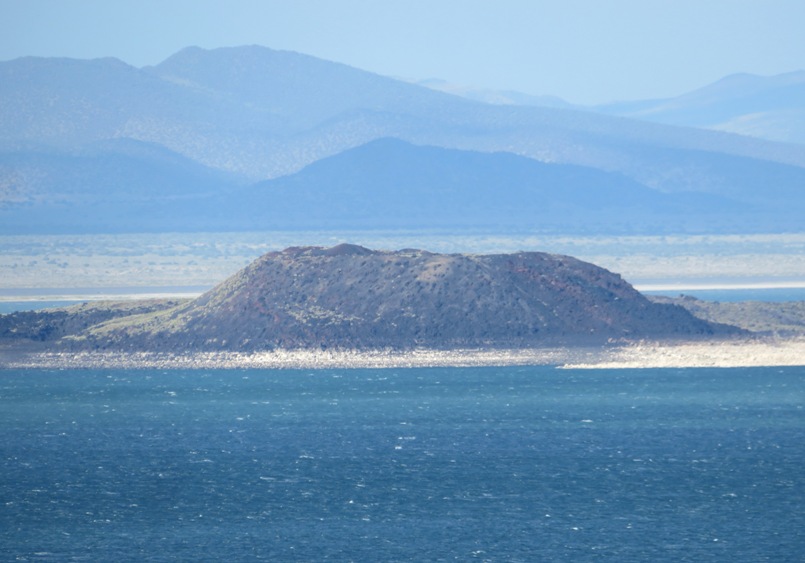
Negit Island.
❮
❯
Mom and Norma walked to the
Old Marina at the west end of the boardwalk. I walked back to the car and then drove to pick them up, giving them an easy quarter-mile stroll instead of a mile of slightly uphill terrain.



